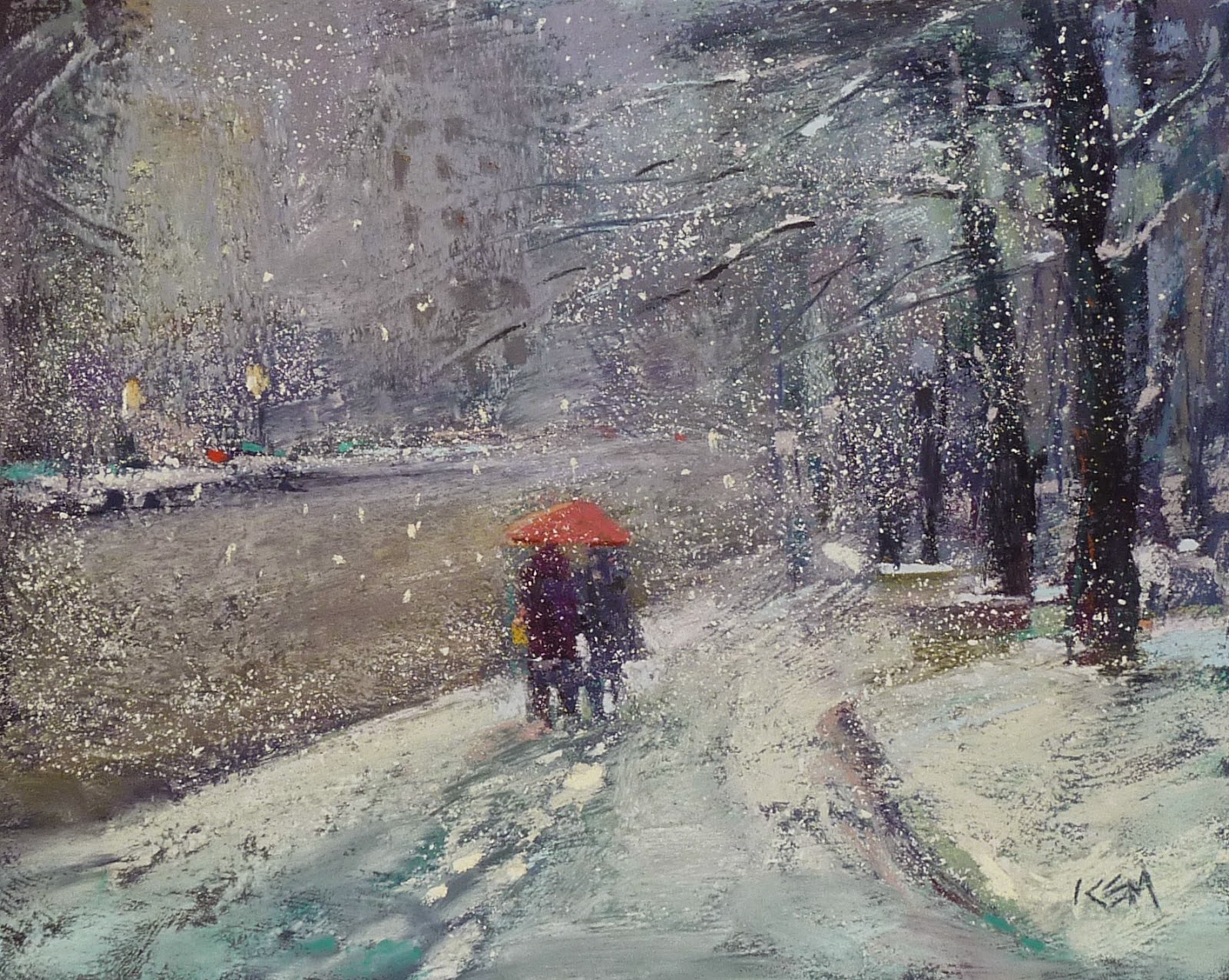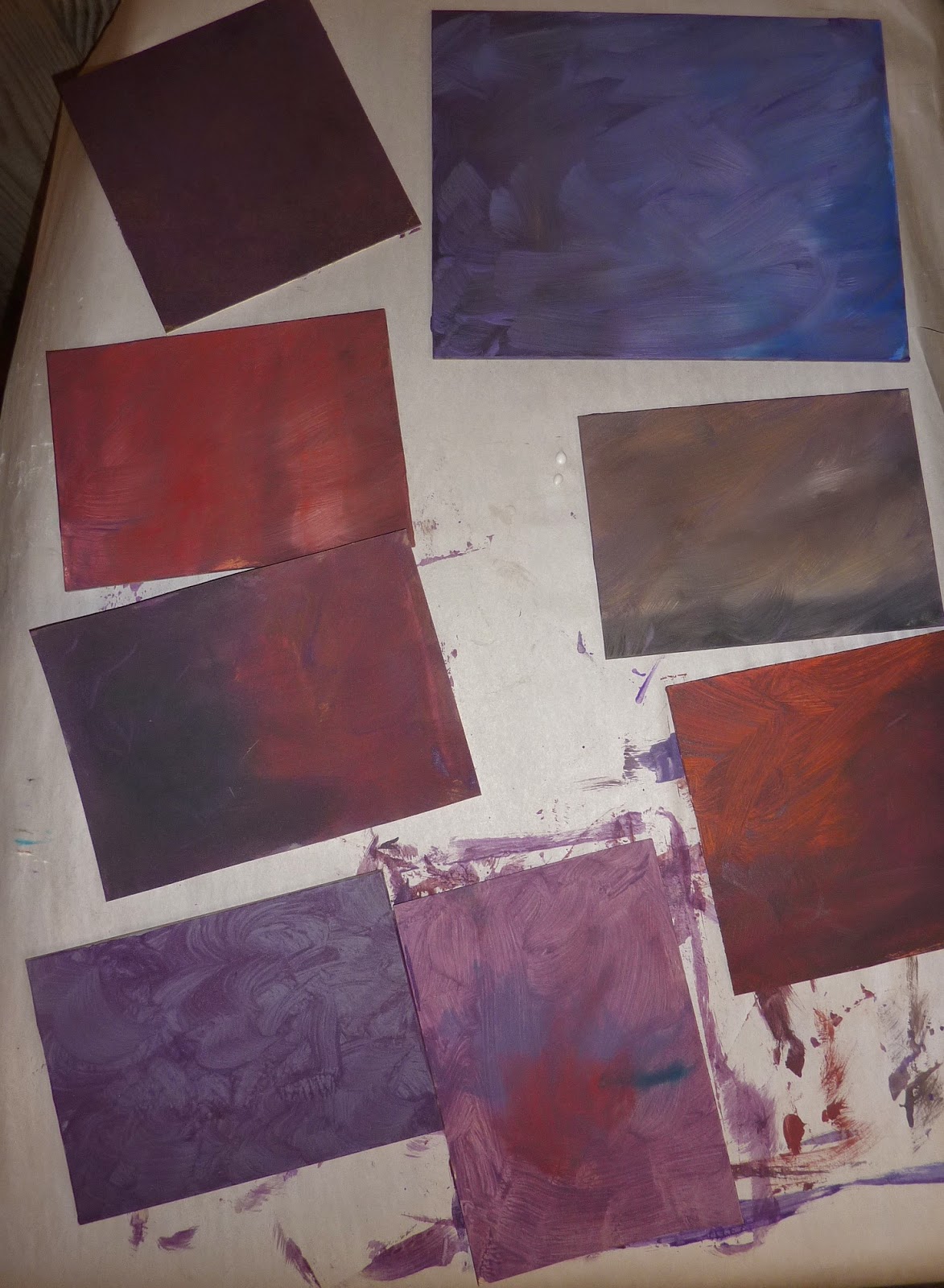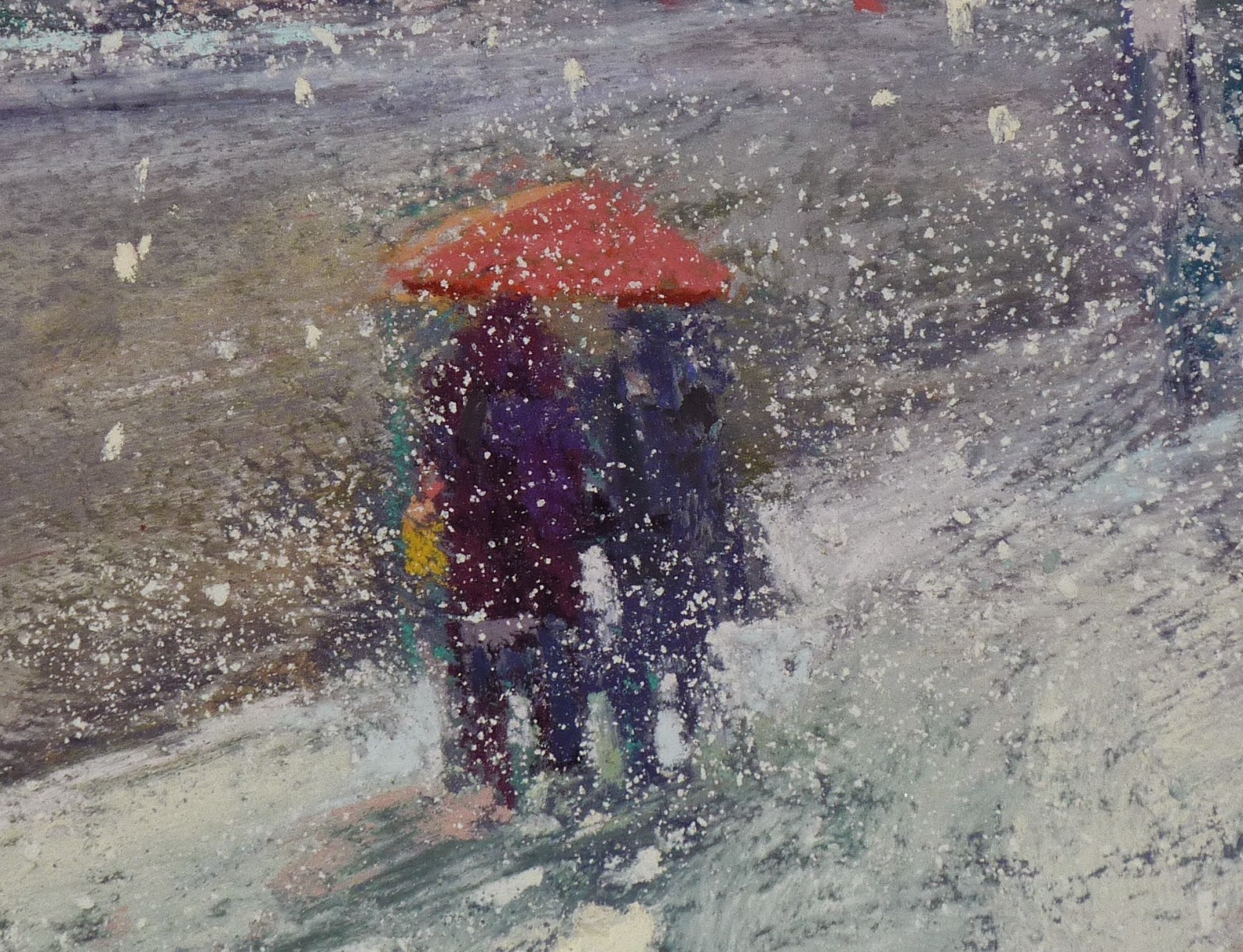 |
| 'Making Tracks' 6x6 pastel ©Karen Margulis click here to purchase $50 |
I want to tell a story with my paintings. Adding a figure to my landscapes sometimes helps complete the story. But I don't like the figure to overwhelm and take away from the landscape. It's a fine line because we are naturally drawn to figures. They do become important.
I try to find the right balance by merely suggesting the figure. They are usually small and they are simply shapes that suggest a figure. In yesterday's post I demonstrated how I add a larger figure. You can read it here. Today I am sharing how I add smaller figures to a landscape.
I begin with a rough sketch. I am using my recycled mat board. I like the purples and oranges of the original painting and the texture of the underpainting! I make a fat mark where I will place my figure (a cross country skier)
I develop the entire painting before I do anything to the figure. I know where he is going but I finished the surrounding landscape up to the mark where he will be. I know I will be able to paint him on top of the background because he is so small (about one inch)
When I am ready to add the figure I make some marks with my darkest value. I typically use a dark blue or purple. I try to get the gesture of the figure with these dark marks. I add a lighter value to his back to begin creating the form.
Next I add another shade of blue for the pants and a small dot of red for the hat. I also decide to add a tiny dot of brown/tan for his face.
I continue with a tiny for of red for his mitten, a brown line for the skis and a thin blue line for the ski pole. I use the snow color to refine the shape of the figure.
All of these tiny marks are made with the edges of soft pastels. I used Terry Ludwig pastels for this figure.
I add a little shaved snow to complete the painting and I am finished!















































